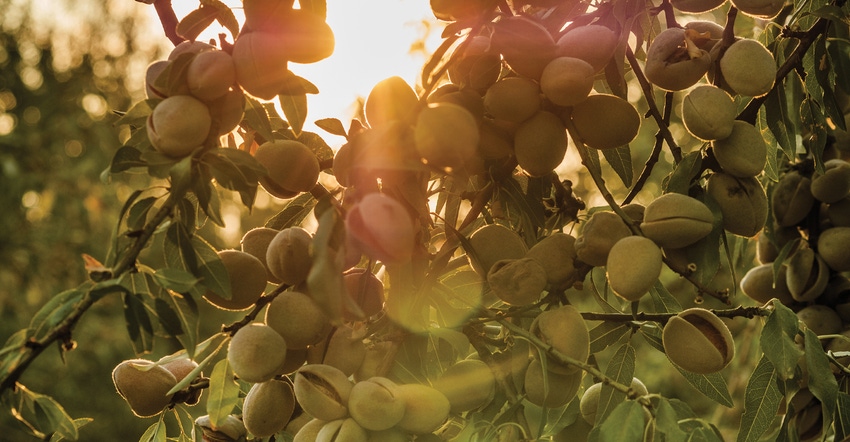July 1, 2019

Sponsored Content
Each year there’s a chance for fire ant populations to infest almond orchards. Once an infestation begins, the quality and yield of a grower’s almond crop may be compromised.
“After the queen establishes a new nest in the early spring, the larvae of fire ants develop into adults in about one month. This happens in about two to three months for pavement ants,” said Leigh Ann Harrison, BASF Technical Service Representative in the San Joaquin Valley. “This development happens underground, so growers won’t actually see the ants until they emerge when soil temperatures warm up. They need to have a plan they can quickly put in place to manage fire ants should ant populations arise.”
If the almond crop isn’t protected while it’s on the ground, growers may see an impact on the overall quality of their crop. Ant feeding can cause damage to the almond nut, downgrading the quality of what would have been considered premium nuts, which are then sold at a lower price point. Alternatively, damaged nuts may not able to be sold at all, impacting overall yield.
Fast-acting solutions
If ant populations remain as harvest time approaches, growers need to act quickly. However, there’s work that can be done before any issues arise to help control ant populations.
“Effective management of fire ants starts with growers managing throughout the season with ant bait insecticides,” said Harrison. “If populations are left unchecked and continue to build, they become harder to control year after year.”
In addition to managing fire ants throughout the season with bait, Harrison also recommends the use of herbicides to control weeds such as spotted spurge that grow on orchard floors. If these weeds are left uncontrolled, their seeds can provide a food source for the pest and also a place for ants to build and protect their nests.
Even if growers implement management practices throughout the season to deter ant populations from forming, issues may still arise as the season progresses. If ant populations spike later in the growing season, growers need a solution that works fast to control ants.
“We recommend almond growers use Altrevin® fire ant bait insecticide about two weeks before harvest,” said Harrison. “This product is fast-acting and also has a short pre-harvest interval that allows for an application just before harvest to help protect a grower’s almond crop.”
It’s difficult to predict the fire ant pressure a grower’s almond orchard may face in any given year. With this in mind, it’s important for growers to have a plan in place to control fire ants should these populations infest an orchard. Having a plan and making timely applications of a fire ant bait insecticide help to preserve the quality and yield of a grower’s almond crop.
Always read and follow label directions.
Altrevin is a registered trademark of BASF.
© 2019 BASF Corporation. All rights reserved.
About the Author(s)
You May Also Like




